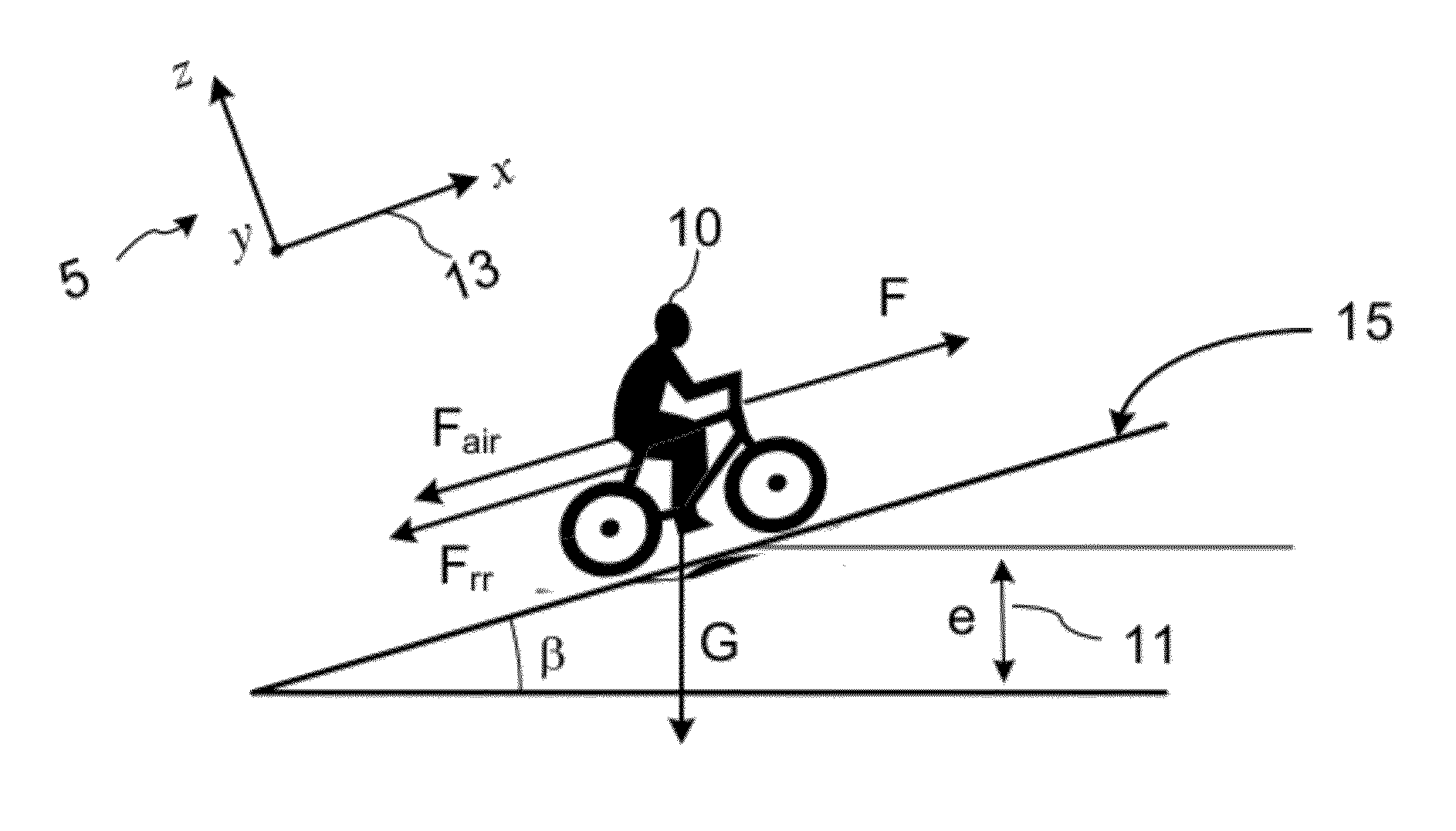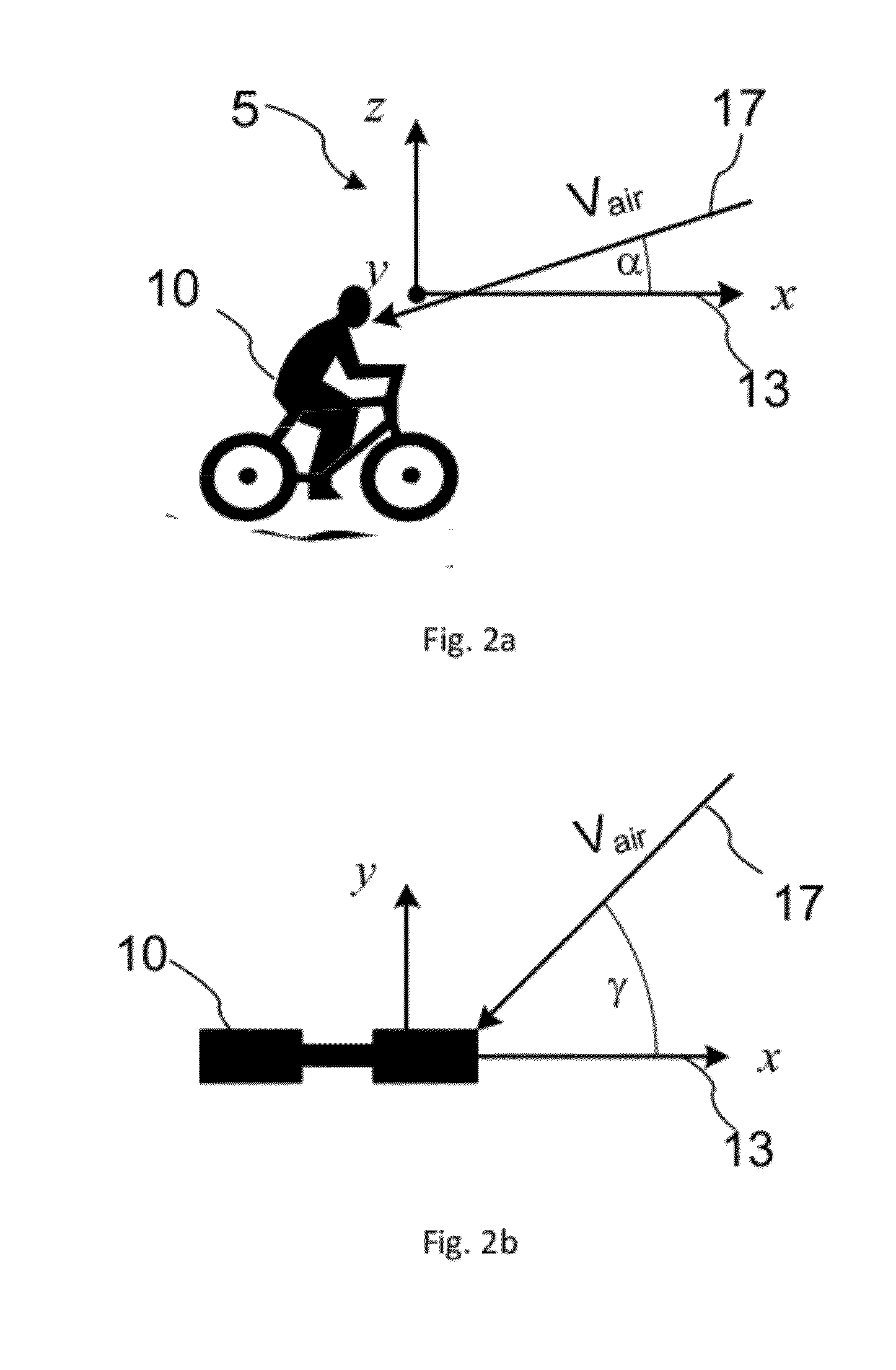Determining angular dependence of aerodynamic drag area for a vehicle
a technology of aerodynamic drag and angular dependence, which is applied in the direction of instruments, liquid/fluent solid measurement, structural/machine measurement, etc., can solve the problems of dependence of aerodynamic drag area on airflow angle, prior art methods that can only determine the average value of effective drag area, or the cda parameter, and cannot achieve the above-mentioned methods
- Summary
- Abstract
- Description
- Claims
- Application Information
AI Technical Summary
Benefits of technology
Problems solved by technology
Method used
Image
Examples
Embodiment Construction
[0026]Exemplary embodiments of the present invention will now be described with reference to a bicycle. However, it will be appreciated that various aspects of the present invention are applicable to any ground or water vehicle, whether powered by a human or another power source. The term “vehicle” as used in this specification may include a human that is using the vehicle. For example, the drag coefficient and drag area of a bicycle “vehicle” would include the effect of a rider. The term elevation as used herein may mean the height of a particular location on the ground relative to a fixed reference point, and can also mean altitude. The term ‘elevation profile’ is used herein with reference to a route or path to mean a dependence of the elevation on a position along the route or path; when used with reference to a trip along a route or path, the term ‘elevation profile’ may also mean a dependence of the elevation on time or distance travelled along the route or path during the tri...
PUM
 Login to View More
Login to View More Abstract
Description
Claims
Application Information
 Login to View More
Login to View More - R&D
- Intellectual Property
- Life Sciences
- Materials
- Tech Scout
- Unparalleled Data Quality
- Higher Quality Content
- 60% Fewer Hallucinations
Browse by: Latest US Patents, China's latest patents, Technical Efficacy Thesaurus, Application Domain, Technology Topic, Popular Technical Reports.
© 2025 PatSnap. All rights reserved.Legal|Privacy policy|Modern Slavery Act Transparency Statement|Sitemap|About US| Contact US: help@patsnap.com



